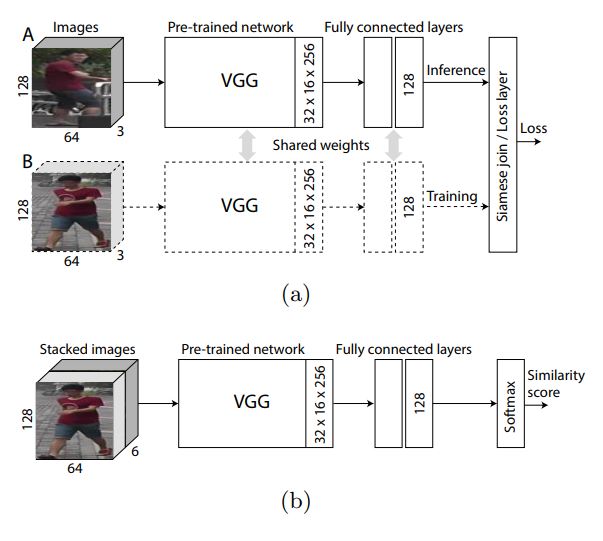Paper: Deep Similarity Metric Learning for Real-Time Pedestrian Tracking
Tracking by detection is a common approach to solving the Multiple Object Tracking problem. In this paper we show how learning a deep similarity metric can improve three key aspects of pedestrian tracking on a multiple object tracking benchmark.
We train a convolutional neural network to learn an embedding function in a Siamese configuration on a large person re-identification dataset.
The offline-trained embedding network is integrated in to the tracking formulation to improve performance while retaining real-time performance. The proposed tracker stores appearance metrics while detections are strong, using this appearance information to: prevent ID switches, associate tracklets through occlusion, and propose new detections where detector confidence is low.
This method achieves competitive results in evaluation, especially among online, real-time approaches. We present an ablative study showing the impact of each of the three uses of our deep appearance metric.

Figure 2: (a) The proposed Siamese network that learns a similarity metric offline, with a margin contrastive loss, (b) An alternative Siamese network that takes two images as an input and outputs a similarity score.
Michael Thoreau, Navinda Kottege. Deep Similarity Metric Learning for Real-Time Pedestrian Tracking. In: Australasian Conference on Robotics and Automation; 9 December 2019; Adelaide, Australia. ARAA; 2019. 7.
Download the full paper here.
For more information, contact us.
[jetpack_subscription_form title=”Subscribe to our News via Email” subscribe_text=”Enter your email address to subscribe and receive notifications of new posts by email.”]
